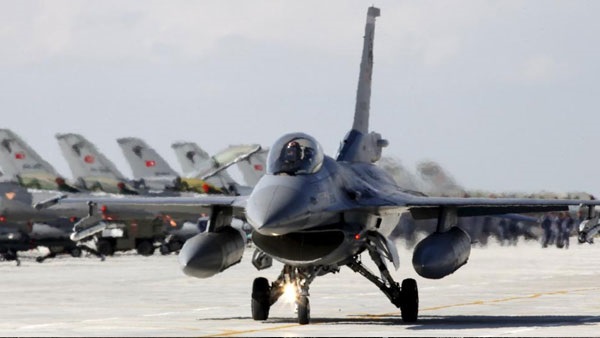Libya transformed into air warfare laboratory

Libya is transforming into battle lab for air
warfare, with involved countries testing their military capabilities against
one another, analysts told U.S. magazine Defense News.
The skies over the North African country have filled
with Turkish and Chinese drones, Russian MiG 29s and Sukhoi 24s and Emirati
Mirage 2000s – reportedly – with Turkish F-16s and Egyptian Rafales on standby,
the magazine said in an article published on Thursday.
Turkey and Qatar support the Tripoli-based
Government of National Accord (GNA) in its war against the eastern forces of
General Khalifa Haftar, who is backed by Egypt, the United Arab Emirates (UAE)
and Russia, among other countries.
Around May 2019 – just one month after Haftar
launched an assault to capture Tripoli – Turkey introduced the Bayraktar TB2
drone to support the GNA, attacking Haftar’s forces, knocking out Russian
Pantsir air defence systems supporting him and ultimately helping end the
operation, Defense News said.
“Turkey has majored in UAV (unmanned aerial vehicle)
design and manufacture and likely used Libya in part as a test and adjust
battle lab, and its systems are now ‘combat proven’. Its industry (…) has also
developed small, precision-guided munitions for UAVs,” Douglas Barrie, Senior Fellow
for Military Aerospace at the International Institute for Strategic Studies in
London, told Defense News.
Jalel Harchaoui from the Clingendael Institute in
Holland called Turkey’s use of the TB2 in Libya had been a gamechanger.
“Turkey decided it was okay to lose them from time
to time, that they were semi-disposable and that novel approach caught their
enemy off guard,” he told Defense News.
“They used to cost the Turks $1-1.5 million apiece
to build, but thanks to economies of scale as production volumes rose, the cost
has dropped to below $500,000, excluding the control station.”
Harchaoui compared the TB2 with the Chinese-made
Wing Loon II drone, which Defense News said the UAE used to bomb Tripoli,
saying that software and other technical changes had boosted the TB2′s
efficiency and reconnaissance capabilities that allowed them to find the right
altitude to avoid the Russian Pantsir systems.
“The performance of the Wing Loon II’s in the hands
of the UAE has meanwhile been largely static. They didn’t evolve, so they have
been much less impressive,” he said.
Harchaoui alleged that UAE Mirage 2000-9 aircraft
flying out of an Egyptian base had been supporting Haftar periodically since
June 2019, according to Defense News.
“Misrata airbase, which has hosted Turkish TB2
drones, was bombed multiple times last year by Emirati drones and jets until
the Turks brought in Korkut and MIM-23 Hawk air defense systems,” he said.
On July 4, fighter jets attacked Al-Watiya air base,
shortly after GNA-allied forces recaptured it and Turkey had brought in its
MIM-23 Hawk air defense missiles there.
Evidence showed the jets took off from Egypt then
flew over the Sahara Desert to avoid detection by Turkish frigates off the
Libyan coast, Harchaoui said.
“Could it have been Egyptian Rafales? They are good
but don’t have enough experience for an ultra-precise mission like this. French
pilots flying Egyptian Rafales is unlikely in case one was captured, leaving
the UAE Mirages as most likely,” he said.
“Of all the Gulf states, the UAE is the most capable
of this kind of mission – they have the combat experience and could do this,”
analyst Barrie added.
Turkey may be considering basing its F-16s at the
now-repaired Al-Watiya air base, however deploying U.S.-built fighter jet may
rely on the say-so of the United States, Defense New said.
“Is the U.S. so concerned about Russia’s
intervention in Libya it would support the deployment of Turkish F-16s to stop
it?” said Harchaoui, referring to Moscow bolstering Haftar’s forces with air
defence systems and fighter jets.
“Or will it come down on the side of Egypt, which is
a U.S. ally? The ball is in its court.”







